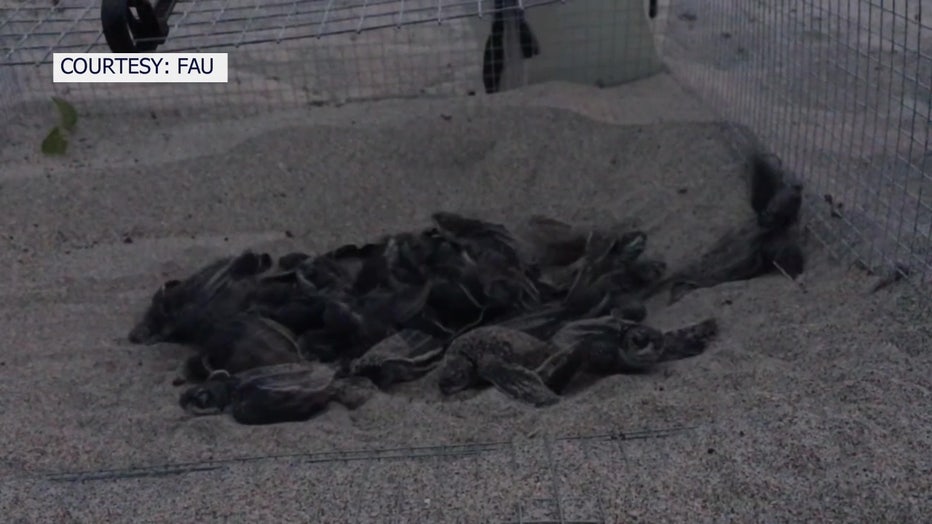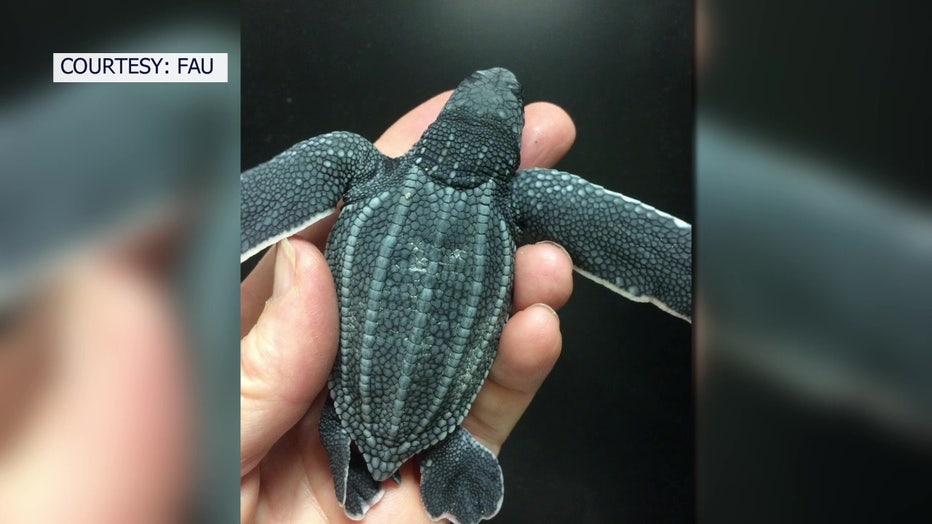Hotter temperatures heating up leatherback turtle nests on Florida beaches
ST. PETERSBURG, Fla. - Baby sea turtles face a lot of challenges when it’s time for them to venture out their own, and a newly published study adds leatherback turtles to the list of nests baking under the Florida sun.
"They're really cool animals, right, and a lot of people are very enthusiastic about sea turtles in South Florida," said Sarah Milton, a biology professor and the department chair at Florida Atlantic University.
Milton led a recently published study on leatherback sea turtles, finding that hotter temperatures from the climate are heating up the nests beneath the sand. Those turtles lay their eggs deeper in the sand where it should be cooler, Milton said.
READ: Endangered Komodo dragons hatch for the first time at ZooTampa
"In the early part of the season, that was true. But the ones that were being laid in, say, the middle of May got very hot," shared Milton. "The temperatures were getting up as high as 36 Celsius, which is very hot, 36 is about 90 to 94 degrees."

Hotter temperatures are warming up sands.
Researchers expect temperatures in the 80s, so it's harder for the turtles to make it out of the nest.
"The leatherbacks, only about 50 percent of them hatch anyways. So part of what we're looking at is why is that hatching success so low? And that we don't really know, but this might be part of it that the nests are getting warmer than we think," added Milton.
What the east coast is seeing with leatherback turtles, has been on the radar for loggerhead and green sea turtles that nest here along the west coast. So now researchers are learning the warmer climate affects these turtles in more ways than one.
READ: Feds spread $1 billion for tree plantings among US cities to lower extreme heat, improve health
"We see the high temperatures also induce more birth defects, developmental abnormalities, so things like cleft palates and incomplete intestines. So, the turtles are just less healthy," said Milton, adding that the turtles also don’t crawl as quickly.

Researchers are monitoring sand temperatures.
She said hot nests are a hard problem to solve.
"If you wanted to cool the nest down to make them more successful, you're going to have to cool and shade 50 nests, 80 nests to try and get one hatchling. It's just it's not practical to do on a large scale," explained Milton. "You can't cool water every nest on a beach. So it has to be a more larger scale solution than that. It might be possible to do it, where you move them into a hatchery, into a small area and just shade and cool those. But that's putting a Band-Aid on the problem rather than fixing the actual problem."
With fewer baby sea turtles, biologists said it’s a sign of our ecosystem's health.

